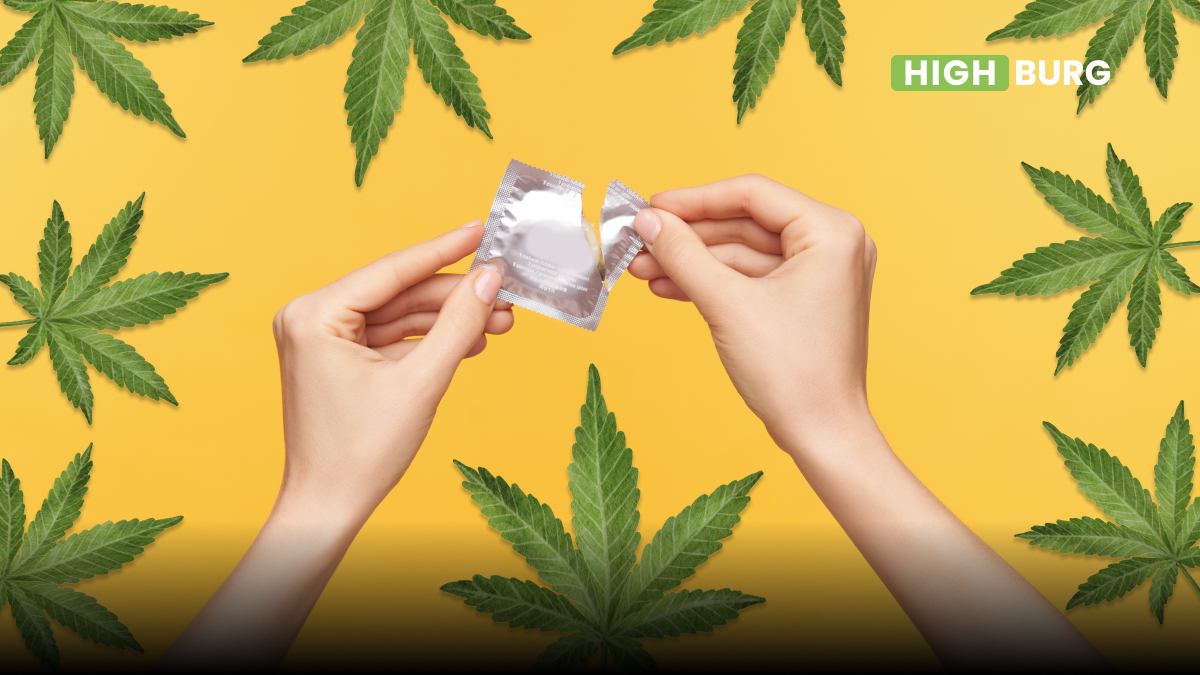On the second day of my fellowship in Berlin this summer, I headed to Görlitzer Park, a notorious spot for desperate tourists looking to pick up weed. I was one of them.
I primarily consume cannabis as a sleep aid, and I didn’t think I’d be able to manage without it, considering the extreme jet lag brought on by a six-hour time difference. Being brand new to the city, I didn’t have a plug.
Of course, the first batch of weed I was offered looked awful—it was the colour of hay. I haggled for a bit and got an eighth of something passable for 35 euros ($51).
Someone in my situation who was dropped into (urban) Canada wouldn’t have that problem anymore. They would be able to go to a store and buy weed, without fear of arrest, because that’s normal now. And a year after legalization, that is worth feeling good about, even if this rollout has left much to be desired.
But a year is a good time to reflect on what’s working and what isn’t:
Ontario, B.C. and Quebec are losers
While Ontario, B.C., and Quebec have strong black markets for cannabis, all three provinces vastly underperformed in terms of setting up legal retail stores and making sales.
Ontario’s 25 brick-and-mortar shops didn’t start opening until April. B.C. only had one store on October 17, 2018 and now has 85 shops, but only 14 in Vancouver, once home to more than 100 black market dispensaries. Quebec has 22 stores. Comparatively, Alberta has 301 stores.
In terms of sales, here’s how those provinces did from October 2018 to July 2019, according to Statistics Canada:
B.C. (population 5 million): $25 million
Alberta (population 4.3 million): $144.9 million
Ontario (population 14.3 million): $151.1 million
Quebec (population 8.39 million): $141 million
On a per capita basis, Alberta is crushing everyone else. Ontario’s sales jumped by $12 million once it opened legal stores in April, but critics argue its randomized licence selection process doesn’t make sense.
“I think that among the biggest losers are consumers in Ontario and that’s a result of the provincial government and their approach to the retail rollout,” said Toronto-based cannabis attorney Caryma Sa’d.
Many would-be retailers, including those who had hoped to transition from the grey market, had shored up financing, rented out spaces, and created business plans, only to not be chosen by the lottery. Meanwhile, the province’s timelines between lottery selection and opening dates meant most of the chosen winners weren’t even ready to open on time.
“It was done in a very arbitrary and unfair way. People who had knowledge, expertise, experience with the plant were really sidelined,” Sa’d said, noting some lottery winners who were disqualified ended up suing the province.
Longtime cannabis entrepreneur Abi Roach, who opened up one of Toronto’s first cannabis lounges nearly 20 years ago, was hoping to get a retail licence but didn’t get chosen by the lottery.
“The provincial governments’ flip flop on its licensing system on a whim brought many businesses to ruin, ours included,” Roach said. “We set up everything necessary for licensing, from floor plans to staffing, only to be shut out completely last minute.”
Roach said even the next 50 stores slated to open won’t be enough.
Cam Battley, chief corporate officer for licensed producer Aurora said to watch for provinces to rapidly add new stores over the next year.
“I think the provinces have been encouraged by the willingness to buy legal weed. I think they’ve also seen there is a cost to not having enough of a retail footprint,” he said.
Edibles could be boring and messy
Canada’s edibles regulations kick in today, but they won’t be on the market until at least December.
Key rules include a limit of 10 milligrams of THC per package for solid and drinkable edibles; a 10 mg THC limit per unit for ingestible extracts and 1,000 mg per package; plain, child-resistant packaging; a ban on mixing with alcohol or nicotine; and a ban on products that are appealing to kids.
It’s still not totally clear what “appealing to kids” means—will gummy bears be allowed? But we’ll soon find out because licensed producers can now begin submitting the edible products they want to sell to Health Canada for approval.
The edibles and topicals market is expected to be massive, with Deloitte predicting it will be worth more than $2.5 billion a year.
Deepak Anand, chief executive officer of CBD distributor Materia Ventures, said he’s concerned about Health Canada’s ability to handle all the applications it’s going to be receiving.
“From what I’m aware of, I don’t think they’ve dedicated any new resources towards that,” he said.
Health Canada was slow to issue licenses and expansion approvals during the first round of legalization, which in part contributed to cannabis supply shortages across the country.
Anand said there’s been a shift away from focusing on licensed producers to focusing on brands—a trend that he thinks will continue with edibles. Major beverage companies, including Molson Coors, Heineken, and Constellation Brands (which owns Corona) are investing billions in cannabis drinks.
However, Canada’s strict advertising and packaging rules around weed means it’s still going to be challenging for brands to market their products. For example, it’s forbidden to have any elements on weed drinks that could be associated with alcohol—meaning no “THC margaritas.”
Battley of Aurora said those rules need to loosen up, especially considering that booze is more harmful to Canadians but its marketing isn’t as tightly controlled.
“We need to get to a point where the restriction on marketing cannabis to adults are harmonized with those that have been in place for decades, both federally and provincially, for beer, wine, and spirits,” said Battley.

Social justice has been ignored
The only thing Canada has done to address the harms of weed prohibition has been to introduce its expedited pardoning process for people convicted of simple possession.
Around 500,000 Canadians are believed to have possession-related convictions.
A 2018 VICE News investigation found that Black and Indigenous Canadians are disproportionately arrested across the country for weed possession.
A pardon means a criminal record is “suspended” but unlike expungement, it doesn’t clear the record, meaning a person could still have issues travelling across the border, for example. According to Global News, as of September 2019, only 44 Canadians had been issued cannabis pardons.
Meanwhile there’s no legal remedy for Canadians who were convicted of other non-violent weed crimes, such as low-level dealing.
“We’re scratching the surface with these pardons. It’s not adequate, it’s not going to right any wrongs,” said Sa’d. “No one is talking about how do we compensate people, racialized, Black and Indigenous people in particular who were criminalized for this.”
In Los Angeles and other parts of California, people who were harmed by the war on drugs are being given social equity licences to gain a foothold in the legal market. No such programs exist in Canada.
Toronto criminologist Akwasi Owusu-Bempah said equity measures should have been built into the legalization framework.
“Our policymakers failed to include measures such as expungement, inclusion in the legal industry, and redistribution of tax revenue back to the communities most harmed by prohibition,” he said.
Meanwhile, Sa’d said former cops and politicians who held up prohibition are now jumping into legal weed.
“I think it’s really hypocritical that people like [former Toronto police chief] Julian Fantino, who compared cannabis to death, they’re now making money hand over first. That’s gross.”
Delivery services are dominating the black market
In August, Gerald Butts, former principal secretary to Prime Minister Justin Trudeau, tweeted that “legal cannabis has wiped out half the black market in a year, just as it was designed to do.”
But Butts was being misleading.
According to Statistics Canada’s National Cannabis Survey, which is based on self-reporting, 48 percent of all cannabis consumers said they purchased at least some weed legally in the first half of 2019, while 42 percent said they purchased at least some of their weed from illegal sources.
That is a positive sign for the government, but it’s hardly the same as wiping out half of the black market. B.C.’s black market alone is estimated to be worth billions of dollars, and it’s legal sales are among the worst in Canada.
Meanwhile, the crowd-sourced Stats Can data found that the average price of legal weed fell in the second quarter of 2019 from $10.65 to $10.23 per gram and black market weed went from $5.94 to $5.59 per gram.
Black market wholesaler Frank* said while the dispensary scene has shrunk post-legalization, delivery services (think Uber for weed) are cropping up everywhere.
“Customers are demanding cheaper prices and more service,” he said. “This is the golden age for the weed consumer.”
Frank said a lot of the smaller mom and pop dealers are getting pushed out of the black market, and that as a wholesaler, he has sold less in volume than last year. However, he said wholesale prices on the black market have gone up as much as $300-$400 a pound, in part due to demand from black market dealers in the U.S.
He noted that price isn’t the only factor to consider—a lot of his customers simply feel black market weed is better quality and has more variety.
“The black market is still existing in its own world. There’s very little crossover.”
Follow Manisha on Twitter.
This article was originally published on vice.com


